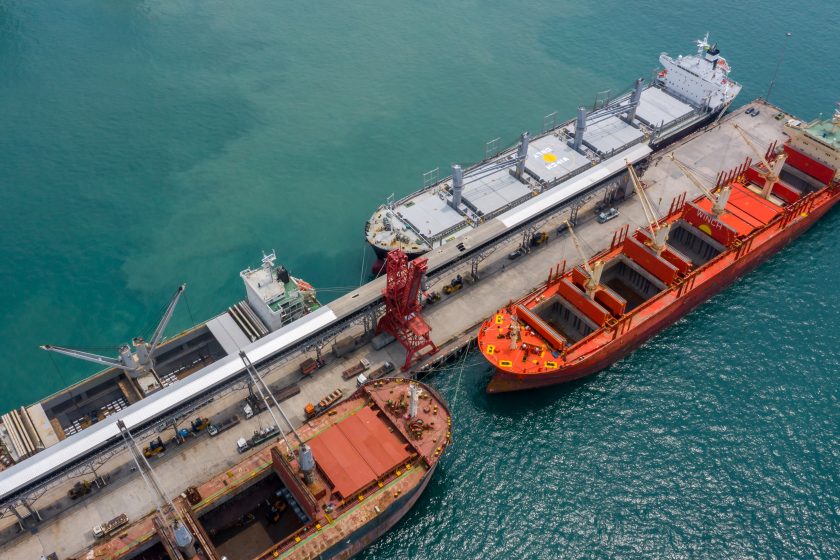LOGISTICS
Bulk vessels, an integral part of global maritime trade, are responsible for the transportation of large quantities of dry commodities such as coal, iron ore, grains, and cement. They come in a variety of sizes and types, each tailored to specific cargo requirements and trade routes. One of the key metrics used to classify these vessels is Deadweight Tonnage (DWT), which refers to the total weight a vessel can carry, including cargo, fuel, water, and crew. After April 2020, several changes have occurred in the bulk vessel industry, leading to a revised classification and employment guide. In this article, we will delve into the world of bulk vessels, examining various classifications based on DWT and offering insights into their typical uses and market trends.
Coaster Vessels
- DWT Range: Up to 5,000 tons
- Employment Guide: Coaster vessels are small, versatile ships primarily employed for short-sea trade. They navigate inland waterways, connecting ports within a specific region, making them ideal for the transportation of general cargo, bulk cargo, and containerized goods.
Small Handy Vessels
- DWT Range: 5,000 to 20,000 tons
- Employment Guide: Small Handy vessels are often used for regional or coastal trade routes. They are suitable for carrying bulk commodities such as coal, minerals, and grain. Additionally, they can access ports with limited infrastructure.
Mid-Size Handy Vessels
- DWT Range: 20,000 to 40,000 tons
- Employment Guide: Mid-Size Handy vessels are versatile and commonly deployed in intercontinental and coastal trades. They can accommodate a wide range of cargo, including dry bulk, minor bulk, and break-bulk shipments.
Large Handy Vessels
- DWT Range: 40,000 to 60,000 tons
- Employment Guide: Large Handy vessels are often utilized in long-haul trades, especially in the transport of grains, iron ore, and coal. Their size allows them to serve ports with better infrastructure.
Cement Carrier
- DWT Range: Varies
- Employment Guide: Cement carriers are designed for the transportation of cement and other dry bulk materials. They are equipped with specialized storage systems to prevent cargo contamination.
Handymax Vessels
- DWT Range: 40,000 to 60,000 tons
- Employment Guide: Handymax vessels are versatile and commonly used for transporting bulk commodities and minor bulk cargoes globally. They are well-suited for accessing various ports and terminals.
Traditional Supramax Vessel
- DWT Range: 50,000 to 60,000 tons
- Employment Guide: Traditional Supramax vessels are employed for carrying various bulk cargoes and are known for their efficiency in loading and unloading.
Ultramax Vessels
- DWT Range: 60,000 to 65,000 tons
- Employment Guide: Ultramax vessels are an upgrade of Supramax vessels and offer enhanced cargo-carrying capacity. They are commonly used for coal, minerals, and agricultural products.
Traditional Panamax Vessel
- DWT Range: 65,000 to 80,000 tons
- Employment Guide: Traditional Panamax vessels are well-suited for navigating the Panama Canal and are used in the transportation of grains, minerals, and other bulk commodities.
Post-Panamax Vessels
- DWT Range: 80,000 to 100,000 tons
- Employment Guide: Post-Panamax vessels are larger and are not limited by the Panama Canal. They are often seen in long-haul trades, particularly in the iron ore and coal markets.
Kamsarmax Vessels
- DWT Range: Around 82,000 tons
- Employment Guide: Kamsarmax vessels are tailored for trade routes that require vessels of precise size to navigate certain ports. They are commonly used for the transportation of grains and minerals.
Mini Capesize Vessel
- DWT Range: 85,000 to 99,000 tons
- Employment Guide: Mini Capesize vessels are smaller versions of the Capesize vessels and are suitable for routes that involve restrictions on vessel size, such as draft limitations in certain ports.
Standard Capesize Vessel
- DWT Range: 100,000 to 150,000 tons
- Employment Guide: Standard Capesize vessels are employed for the long-haul transportation of iron ore and coal. They are among the largest bulk carriers and can access major ports worldwide.
Large Capesize Vessel
- DWT Range: Over 150,000 tons
- Employment Guide: Large Capesize vessels are the giants of the bulk vessel industry and are used for the transportation of massive volumes of iron ore, coal, and other bulk commodities on long-haul routes.
VLOC (Very Large Ore Carrier) and ULOC (Ultra Large Ore Carrier)
- DWT Range: VLOC – 200,000 to 400,000 tons, ULOC – Over 400,000 tons
- Employment Guide: VLOC and ULOC vessels are specially designed for the iron ore trade. They are often used to transport iron ore from major exporting countries to steel-producing regions.
Chinamax/Valemax
- DWT Range: Up to 400,000+ tons
- Employment Guide: These colossal vessels are at the pinnacle of bulk carrier sizes and are employed by major mining companies for the efficient transportation of iron ore on long-haul routes.
Market Trends and Conclusion
The world of bulk vessels is dynamic and evolving, driven by changes in trade patterns, cargo demand, and environmental regulations. After April 2020, there has been a notable shift towards larger and more efficient vessels, as well as a growing emphasis on eco-friendly technologies and sustainability in shipping.
Understanding the various classifications based on DWT and their employment guides is essential for shipping professionals, investors, and anyone involved in the maritime industry. Staying informed about these developments is crucial in a world where the movement of bulk commodities remains a vital component of global trade.
SBB Shipping USA Inc. – Consider it shipped!™
SBB Shipping USA Inc. – Consider it shipped!™
Related Posts
LOGISTICS
August 28, 2023 By sbbshippingusainc
Transit Time vs. Lead Time in Logistics
In the realm of supply chain management and logistics, terms like “transit...
LOGISTICS
July 16, 2023 By sbbshippingusainc
The Ins and Outs of Dry Bulk Chartering
Welcome aboard, fellow readers! Today, we set sail on a journey through the fascinating...




